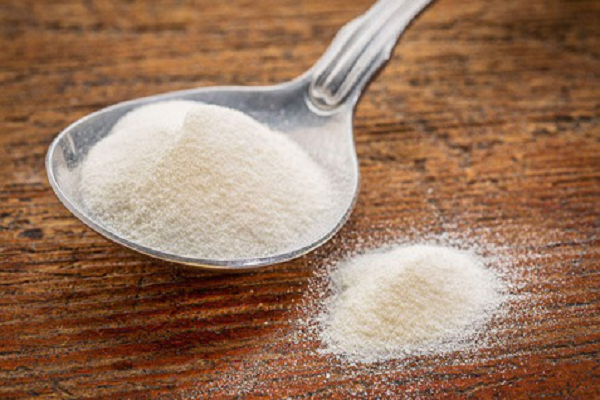Science and Technology Daily News, January 19, 2006 In order to fundamentally change the current rice quality, namely the amylose content of rice, in 2001, the Ministry of Agriculture listed the “rice quality amylose measuring instrument†project in the “948†plan. The project, organized and implemented by China Agricultural University, aims to develop a quality rice quality tester suitable for all aspects and levels through this research. Under the guidance of Professor Jia Guiru, the director of the Department of Applied Physics at the China Agricultural University, the project leader has completed the project and achieved remarkable results.
It is reported that the rice quality amylose measuring instrument consists of a computer, a 60-position autosampler, an 8-way peristaltic pump, an amylose module, an automatic gas-liquid separator, and an optical fiber dual beam automatic photoelectric colorimeter. It uses a wavelength of 635nm semiconductor laser as a monochromatic light source, computer communications and computer feedback control software, detection accuracy and detection speed has reached the international advanced level, a high degree of automation, suitable for quality inspection center above the county level. In the economic "rice quality amylose measuring instrument". The instrument consists of a single-chip microcomputer, a powerless autosampler, a display, and an optical fiber dual-beam automatic photoelectric colorimeter, which can display print and data. The detection accuracy of the instrument has reached the international advanced level, and the detection speed is to detect one sample every two minutes. The project has applied for two patents: "non-powered autosampler" and "18 microlitre coloring pond." Among them, 18 microliters of coloring pool has reached the international advanced level.
Professor Jia Guiru discovered during research and experiment that the higher the amylose content of rice samples, the darker the color of the sample solution after hair coloring; the lower the amylose content of rice samples, the lighter the color of the sample solution after hair coloring. Based on this phenomenon and the knowledge of colorimetry, a new colorimetry-based detection method is proposed, namely "Digital Colorimetric Detection." In theory, the detection accuracy of the digital colorimetric detection method should not be lower than the detection accuracy of the spectrophotometric method, and the detection speed of the digital colorimetric detection method can be more than 100 times faster than the photometric method.
Prof. Hou Caiyun also used the digital colorimetric detection method to detect the content of rice amylose. In the “Tenth Five-Year Plan†research project organized by the Ministry of Education in 2003, a rapid detection method for detecting rice amylose content using digital colorimetry was conducted at the appraisal meeting “Fast Quality Rice Quality Rapid Detection System†with the same accuracy as the current standard method. , is considered to have an international advanced level.
In March 2004, poor quality milk powder appeared in the country. Quantitative detection of protein content of milk powder was performed using a digital colorimetric detection method. Detection took 40 minutes. The detection of milk protein content is qualified, the process only takes 2 minutes. In June 2004, the Ministry of Education organized an identification of a rapid protein detection system for milk powder. The rapid detection system of milk powder protein developed by the project is suitable for China's national conditions and fills the domestic gap. The overall technology ranks the leading position in China. Digital image recognition technology has reached the international advanced level in the detection of protein in milk powder.
"Digital colorimetric detection method" has the advantages of low cost, high precision, high speed, and so on. In theory, it is entirely possible to become a universally applicable new detection method. The use of digital colorimetric detection methods in the detection of rice amylose, protein content and protein content of milk powder gave great encouragement to the research group, and strengthened the confidence of the research group to further develop and perfect digital colorimetric detection methods. The task force strives to perfect the digital colorimetric detection method into a universally applicable detection method in 1-2 years, partially replacing the spectrophotometric method.
Collagen is a triple helical protein which can be considered as the bio-glue inside our body; in fact, animal glue can be obtained by boiling the animal skin. Collagen, a major component of connective tissues, exits in the extracellular space of these tissues which are the key reinforcing and bonding materials for all tissues and organs throughout our body, forming rigid structures as such bone, semi-rigid tissues such as cartilage, or soft tissues such as muscle, tendon, skin, ligaments, and cell membranes, etc. There are different forms (fibrillar and non- fibrillar) and types of collagens in the body; Type 1 being the major type constitutes over 90% in our body and is the major component in skin, tendon, vascular ligature, organs, bone (main component of the organic part of bone). Because collagen is an essential building material of all tissues and organs, it has many medical uses, such as in cardiac (hear) applications, cosmetic surgery, bone grafts, tissue regeneration, reconstructive surgical uses, and wound healing care.
Collagen is created inside fibroblast cells, and this process is needed to support the creation and repair of the body`s connective tissues. However, the biological process starts to breakdown when we are aging, normally after we reach the age of late 20s or early 30s. Because collagen from natural sources such as animal, fish scales or plant contain essentially the same amino acid compositions (glycine, proline, alanine, hydroxyproline, glutamic acid, arginine, aspartic acid, serine, lysine, leucine, valine, threonine, phenylalanine, isoleucine, etc.) as human collagen, supplement the body with the natural collagen, either by dermal application or through oral ingestion, can help rejuvenate collagen creation process to support the repairing of aging connective tissues in our body, particularly those in our skin, and to reverse or slow down the aging process for a more youthful appearance.


Collagen
Hydrolyzed Collagen,Fish Collagen,Collagen Food,Collagen Cosmetic
Nanjing Sunshine Biotech Co., Ltd , http://www.sunshine-bio.com